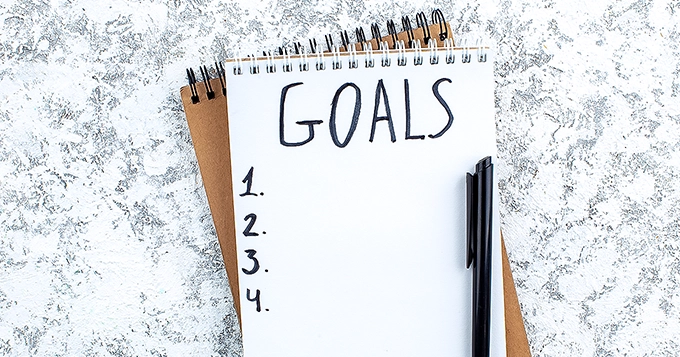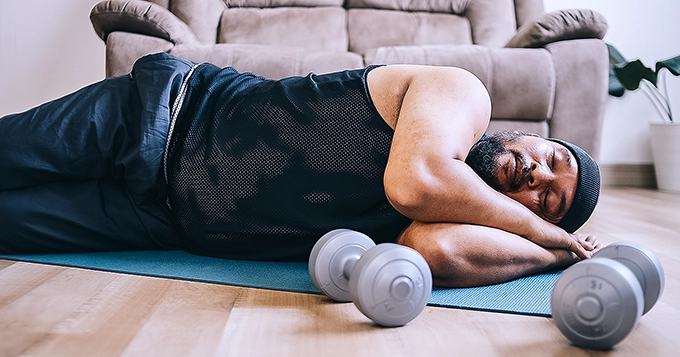
Key Takeaways
- Start slowly to avoid injury. A regular routine helps make exercise a lasting habit.
- Try different exercises to find what you enjoy. Doing activities you love helps you stick to your routine and makes workouts more enjoyable.
- Nutrition is key to fitness. Eat a balanced diet of whole foods and prioritize rest to prevent injury and improve performance.
- Keep a record of your workouts and progress using journals or fitness apps.
With so much information on the internet, it’s easy to feel overwhelmed and unsure where to even begin. But fear not! This beginner’s playbook is here to guide you through the process and help you kick-start your fitness journey with confidence.
Set Clear Goals

Before you lace up your workout shoes and hit the gym, allocate some time to define your fitness goals. Do you want to build muscle, shed some pounds, improve endurance, or simply start living healthier? Having clear and specific goals will give you motivation and direction.
What is the first step to setting a physical fitness goal?
The first step to setting a fitness goal is understanding what you truly want. This involves distinguishing between your outcome goal (what you tell yourself) and the process you’re willing to undertake (the actions you’ll take to achieve it).
Once you know your outcome goal, you must ask yourself whether you are willing to do what it takes to achieve it—the Process.
One popular approach to setting fitness goals is the “SMART” framework, an acronym for Specific, Measurable, Attainable, Relevant, and Time-Bound. When applied to fitness goals, this framework helps you establish clear and actionable objectives for yourself. Let’s break down what SMART fitness goals entail:
What is an example of a general, long-term fitness goal? It could be “achieve body goals,” “improve overall fitness and wellness over the next year,” or “get in shape.” Long-term goals are crucial as they offer direction and purpose to your fitness journey. They serve as a blueprint for your desired destination, keeping you focused on the broader vision.
However, specific and short-term goals can help you keep motivated and provide quick wins. Aim for something specific such as “lose 10 pounds” or “complete a 5K race.”
By applying the SMART framework to your fitness objectives, you can create well-defined, measurable, and achievable goals that keep you motivated and on track.
Start Slow

No, Rome wasn’t built in a day, and your quest for better fitness won’t either. It is vital to start slowly and only build up to a more intense workout when your strength and endurance improve. Progress at a rate that is appropriate for you. Pushing yourself too hard too quickly might result in fatigue or even damage.
Find Activities You Enjoy
Fitness shouldn’t feel like a chore. Experiment with different types of physical activities until you find something you genuinely enjoy. Whether it’s running, swimming, dancing, yoga, or weightlifting, there’s no shortage of ways to get moving.
Create a Routine
Fitness shouldn’t feel like a chore. Experiment with different types of physical activities until you find something you genuinely enjoy. Whether it’s running, swimming, dancing, yoga, or weightlifting, there’s no shortage of ways to get moving. When you find an activity you love, staying consistent becomes much easier.
Mix It Up
While consistency is important, so is variety. Incorporating a mix of flexibility work, cardio, and strength training into your routine will help you achieve a well-rounded level of fitness and prevent boredom. Don’t be afraid to try something different and keep things interesting.
Fuel Your Body

Exercise is only one component when it comes to achieving your fitness goals. Nutrition plays a very important role too. Fuel your body with a balanced diet composed of whole foods, including plenty of colorful veggies and fruits, lean proteins, and whole grains. Stay hydrated by drinking plenty of water throughout the day, especially pre-, during, and post-exercise.
Get Adequate Rest
Rest and recovery are often overlooked but have a significant impact on the success of your fitness regimen. Giving your body ample time to rest and repair itself is crucial for avoiding injury and maximizing performance. Aim for around 7 to 9 hours of quality sleep and listen to your body’s cues for rest and recovery days.
Track Your Progress
Don’t forget to track your progress. Keeping a workout journal (whether on a notebook or digital), taking measurements, or using fitness apps can help you see your progress and motivate you to continue pushing towards your goals. No matter how small, acknowledge and celebrate your accomplishments. Take the opportunity to learn from losses and modify your strategy as necessary.
Not reaching a goal can be attributed to four factors:
- Stopping the process and not continuing towards the goal.
- Losing interest in the goal and focusing on something else.
- Not fully understanding what’s needed and requiring more information.
- Choosing a different path in life.
Although other factors may arise, these are the main reasons why goals are hindered.
Helpful Tips & Tools to Stay Motivated

Starting your fitness journey with goal-setting is just the beginning. Here are some six tips and tools to help you stick to your plan:
- Develop a fitness plan: Build a workout routine that includes both cardio and strength exercises, along with activities you enjoy like walking. Set short-term goals to keep you motivated along the way.
- Celebrate achievements: Acknowledge even the smallest victories to stay motivated and focused on your goals.
- Track progress: Use a fitness journal or app to monitor your progress. Many apps can analyze your data for a clearer view of your journey.
- Keep it varied: Keep your workouts interesting by trying new activities and mixing up your routine.
- Find a buddy: A workout session with a friend can make exercise more fun and enjoyable.
- Treat yourself: Reward yourself for reaching milestones, whether it’s with a new gym outfit or a massage.
Overcoming Common Challenges

Facing challenges when maintaining a fitness routine is common. Here are some typical hurdles and strategies for overcoming them:
- Lack of time: Prioritize exercise by scheduling it into your daily routine. Establishing a consistent time for your workout, even if it’s just for 10 to 15 minutes, helps make it a habit you naturally gravitate toward.
- Lack of motivation: Explore enjoyable activities and vary your routine to keep it engaging. Recognize that there will be those days when you seem to feel tired or unmotivated, so relying solely on motivation isn’t sustainable. Instead, focus on discipline, committing to your workout even when you don’t feel like it. Consistent discipline, not motivation, is the key to forming habits.
- Plateauing: If you find yourself stuck at a certain weight or fitness level, consider diversifying your routine with new exercises or intensifying your workouts. Reflect on your habits and identify any behaviors that might be hindering your progress. Holding yourself accountable and acknowledging your control over your fitness journey is essential.




